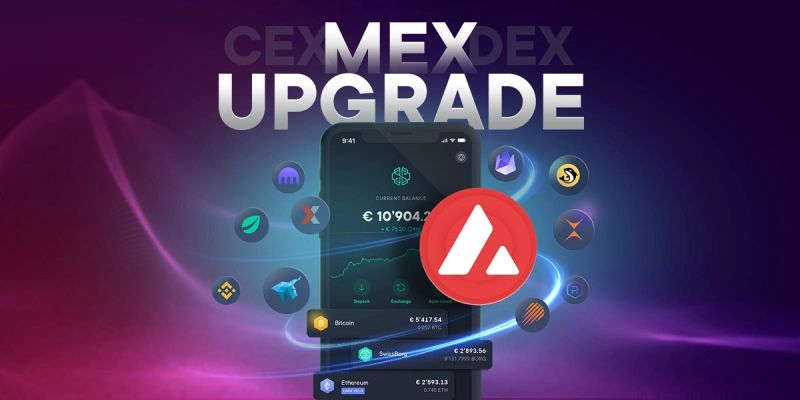1. Analysis of the case
Understanding Mantra (OM)’s Recent Crash
Mantra (OM), a prominent Real-World Asset (RWA) project, experienced a sudden and dramatic crash on April 13, when its token value dropped by approximately 90%. Although initial fears centred around a rug pull (where insiders secretly dump tokens and disappear), broader evidence indicates the collapse was likely caused by forced liquidations and poor risk management rather than outright fraud.
Timeline of Key Events
Before April 13
In January 2025, Mantra signed a significant $1 billion deal with Dubai developer DAMAC. In February, the project secured the first DeFi license from Dubai’s Virtual Assets Regulatory Authority (VARA). By February 22, OM reached an all-time high of around $9—representing a more than 300x increase from its 2024 lows.
April 13
OM’s price abruptly plunged from roughly $6 to below $1 within a few hours, triggering widespread panic across social media. Several exchanges temporarily halted OM trading, and rumours about potential hacks or insider selling amplified market anxiety.
April 14 and Beyond
Mantra issued an official statement attributing the crash to "reckless forced closures" by a centralised exchange (CEX) during a low-liquidity period. They emphasised that no insiders sold tokens, instead pointing to automatic margin calls and extensive liquidations as the primary cause. While many found this explanation plausible, skepticism remains, and some analysts have suggested there might be additional factors involved.
Official Statement vs. Analyst Claims
Mantra’s Explanation
According to Mantra, margin liquidations on a CEX injected a substantial amount of OM into an illiquid market on Sunday evening, triggering a chain reaction of forced liquidations and stop-loss orders that rapidly accelerated the price decline. The team strongly denies any wrongdoing or insider selling, firmly rejecting claims of a rug pull. They have repeatedly confirmed in live sessions and public statements that neither the core team nor advisors sold tokens or were liquidated during the event (source). A full transparency report is currently in preparation to provide further evidence.
External Analysis
A detailed analysis by @traderview2 sheds light on how the structure of futures markets may have played a dominant role in the crash. Reviewing over 15 million trades across Binance and Bybit, the data showed minimal selling pressure in the spot market—approximately -$100K on Binance before the major price drop, and even slight net buying on Bybit. However, it was the perpetual futures (perp) market that drove the -92% collapse.
At 18:28:33 UTC, a $1M sell order in the perp market on Binance, alongside a $125K spot sell, triggered a cascading wave of liquidations—totalling $14M in long positions within just one minute. The perp markets registered a negative $41M notional delta, accounting for roughly 88% of total sell volume, while spot markets remained balanced and even showed a slightly positive net delta an hour later. This highlights the outsized impact high-leverage futures trading can have on price volatility, compared to the relatively stable spot market where assets are directly owned.
SwissBorg Perspective
At this stage, it remains difficult to definitively pinpoint the exact cause of OM’s recent crash. Multiple explanations and narratives continue to circulate, making it challenging to separate speculation from fact—but as the saying goes, "The truth often lies, unclaimed, in the middle."
While the collapse was severe, the general consensus has shifted away from theories of intentional wrongdoing by Mantra. Instead, it appears more likely that a combination of inflated valuations, strategic missteps, and external triggers—including high-leverage futures trading—played a significant role. Together, these elements likely eroded investor confidence and set the stage for a dramatic price drop triggered by a single, high-impact event like a forced liquidation.
Post-Crash
For many community members who incurred losses, transparency is now crucial. They seek detailed explanations about how the team managed OM tokens and clear information on new measures implemented to avoid similar incidents in the future. While Mantra maintains that its project fundamentals remain solid, restoring market trust will likely take considerable time and possibly significant structural adjustments.
Co-founder John Patrick Mullin has stated, "We want to assure you that MANTRA is fundamentally strong". Nonetheless, the project faces the challenging task of rebuilding investor confidence. OM briefly rebounded from about $0.37 to a peak near $0.85. Whether OM can recover part of its former valuation—or if this setback becomes insurmountable—will largely depend on how effectively Mantra addresses underlying issues and communicates transparently with its community moving forward.
2. Impact on SwissBorg Users
OM Token Price Movement
OM Price as of 11.04: $6.399
OM Price as of 14.04: $0.598
Between these two dates, OM’s price decreased by approximately 90.65%.
Impact on the Crypto Bundles
Crypto Stars
OM allocation before crash: 9.59% of the Bundle
OM allocation after crash: 0.97% of the Bundle
The OM price crash caused the Crypto Stars Bundle's total valuation to decrease by 8.7%.
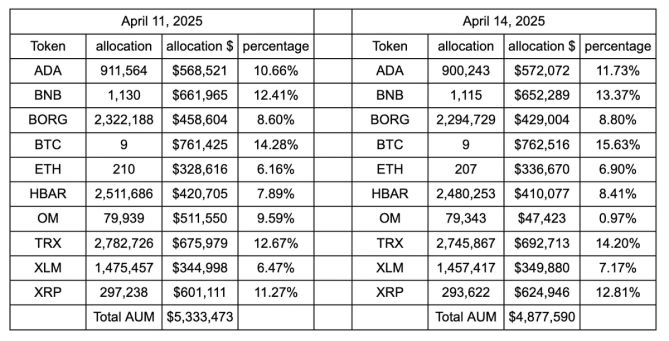
Comparison to benchmark
Even though the token negatively impacted the performance of Crypto Stars, the strategy still significantly outperforms its benchmark—an equally weighted portfolio of all the tokens listed on SwissBorg. As of 15.04.25, Crypto Stars is down -42.25%, compared to -58.14% for the benchmark.
Crypto Stars remains one of the best options to gain exposure to the full ecosystem without the hassle of monitoring each position or handling rebalancing manually.
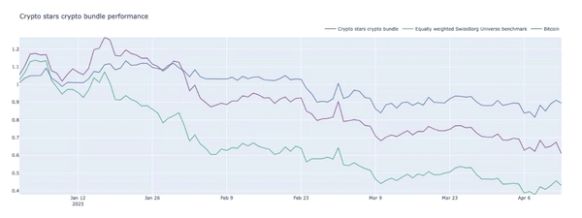
RWA Bundle
OM allocation before crash: 36.48% of the Bundle
OM allocation after crash: 5.26% of the Bundle
The OM price crash caused the RWA Bundle’s total valuation to decrease by 33%.
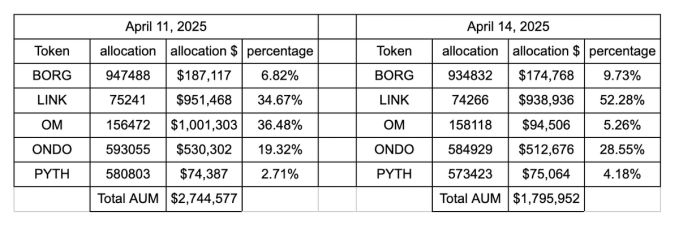
Comparison to benchmark
Before the OM incident, the RWA Bundle was delivering strong performance, consistently outperforming its benchmark (an equally weighted portfolio of all RWA-sector tokens listed on SwissBorg). Following the crash, the Bundle is now slightly underperforming. As of 15.04.25, its performance stands at -46.95%, compared to -42.09% for the benchmark.
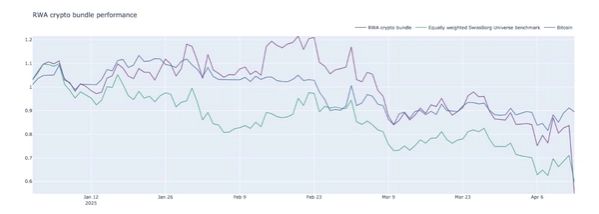
Important Note on the RWA Bundle:
It is important to highlight that the number of investable tokens within the RWA sector is limited. To qualify as investable, a token must first successfully pass SwissBorg's rigorous due diligence process for listing, and subsequently demonstrate sufficient liquidity to ensure smooth trading.
3. Decision-Making Analysis for the Current OM Position
In order to decide on the best course of action regarding our current OM holdings, we've analysed several potential scenarios:
Scenario 1: Token Goes to Zero
This could occur if investor confidence continues deteriorating due to persistent negative sentiment, exchange delistings, or ineffective and unclear communication from the Mantra team. Without decisive intervention, ongoing panic-selling could drive the token price to zero.
Scenario 2: Token Stays Flat
OM might remain relatively stable if community sentiment recovers slightly but stays cautious. In the absence of significant positive or negative news, the price may fluctuate within a narrow range. Gradual ecosystem improvements or incremental updates from the team could help maintain current levels without meaningful upward momentum.
Scenario 3: Token Recovers
A price recovery could materialise if Mantra successfully rebuilds trust through transparent communication, clear risk management improvements, and substantial ecosystem developments. Positive partnerships, tangible use cases, and improved market sentiment would likely renew investor interest and boost the token's value.
Conclusion
Our assessment is that the combined probability of Scenarios 2 and 3 outweighs the risk associated with Scenario 1. Based on this analysis, we believe the best course of action—at the time of writing—is to maintain the OM position within the RWA Bundle rather than sell it immediately.
However, this should not be interpreted as a recommendation to buy OM, as purchasing the token would represent a high-risk move given the ongoing uncertainties. We are closely monitoring the situation and remain ready to take appropriate action should new information emerge.




